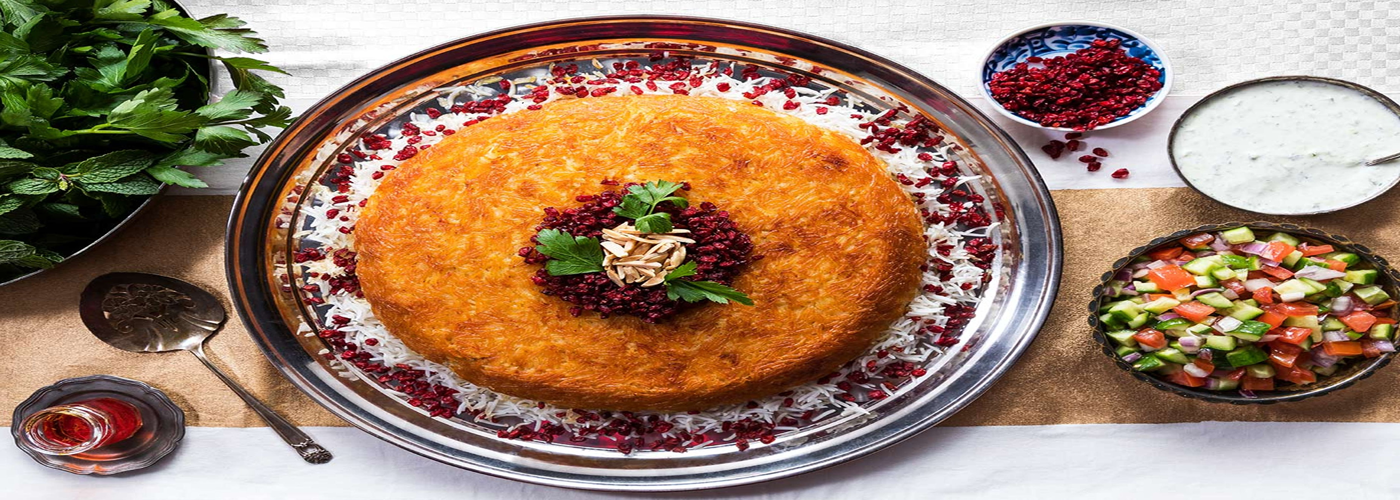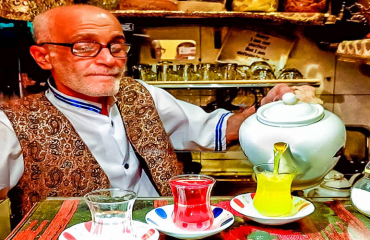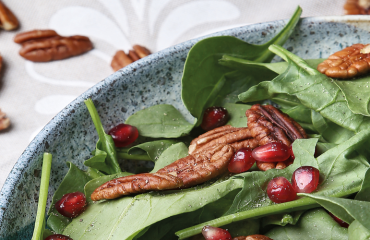
Main Course
Typical Iranian main dishes are combinations of rice with meat, vegetables, and nuts. Herbs are frequently used, along with fruits such as plums, pomegranates, quince, prunes, apricots, and raisins. Characteristic Iranian flavorings such as saffron, dried lime and other sources of sour flavoring, cinnamon, turmeric, and parsley are mixed and used in various dishes.
- Dizi (Abgoosht )(آبگوشت / دیزی)
Abgoosht is an Iranian stew. It is also called Dizi , which refers to the traditional stone crocks it is served in. Some describe it as a “hearty mutton Persian soup thickened with chickpeas. This is a rich and nutritious dish, suitable for cold winter days. It combines complex carbohydrates, protein and fat, and with side dishes of fresh herbs and yogurt it makes a healthy balanced meal.
- Kebab
Kebabs have more variety than you might think. First, there’s koobideh, ground meat seasoned with minced onion, salt and pepper. It sounds simple, but the taste is sublime. There is kebab-e barg, thinly sliced lamb or beef, flavored with lemon juice and onion and basted with saffron and butter. Chicken kebab, known as joojeh, is traditionally made from a whole chicken, bones and all, for more flavor marinated in lemon and onion, and basted with saffron and butter.
- Khoresht-e Ghormeh sabzi
Made from herbs, kidney beans and lamb, deep green gormeh sabzi satisfies two Persian flavor obsessions: it’s sour and full of herbs. The stew is seasoned with dried limes, limoo omani in Farsi. These limes are extra intense and sour, with a bittersweet taste that gives the stew a unique flavor. The other constant in gormeh sabzi is fenugreek leaves, a taste unfamiliar to most westerners. Other herbs include parsley, coriander and scallions.
- Khoresht-e Gheimeh
Khoresht-e gheimeh is diced meat combined with yellow split peas, dried limes and saffron with fried potatoes. It is very popular all over Iran and can be cooked all year round; the combination of meat and pulses, served with rice, provides a nutritious meal.
- Khoresht-e fesenjan
This iconic stew, an essential part of every Persian wedding menu. Khoresht-e fesenjan traditionally made with duck, this dish also works well with chicken or lamb. In the north of Iran it is sometimes made with fish. It is a relatively easy khoresht to make, but it must be cooked slowly to allow the flavours to develop in the sauce. The consistency should be thick and creamy and the colour almost black. The distinctive flavour combines the nutty taste of ground walnuts with the sweet and sour flavour of pomegranate syrup.
- Zereshk polo
The sweet and sour flavour of zereshk (barberries) and the glistening ruby red berries set against the white and saffron tinged grains make this a feast for the taste buds and the eyes. Zereshk polo is served at weddings and other celebrations because it is impressive and easy to make in large quantities. It is usually served with chicken, but it is also delicious with Saffron yogurt lamb.
- Sabzi polo
For the Persian New Year (Norouz) celebrations it is traditional to serve this rice dish with fish – traditionally fillets of smoked white fish from the Caspian Sea. However, fresh fish is now widely available. In the north of Iran it is marinated in lemon juice and saffron and fried, while in the south the fish is stuffed and baked. This rice goes well with most fish and meat dishes.










